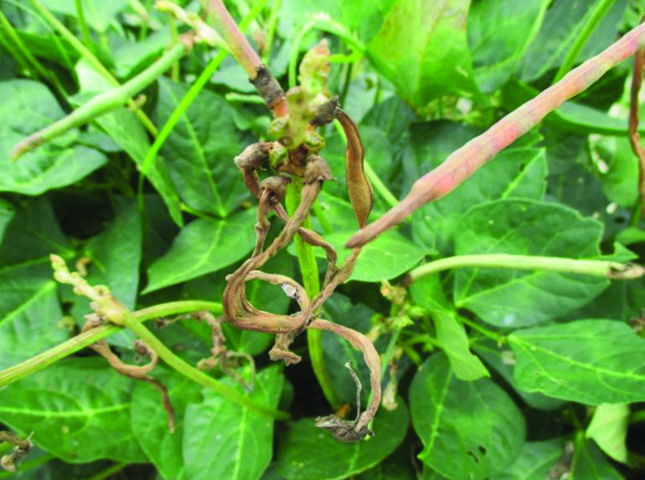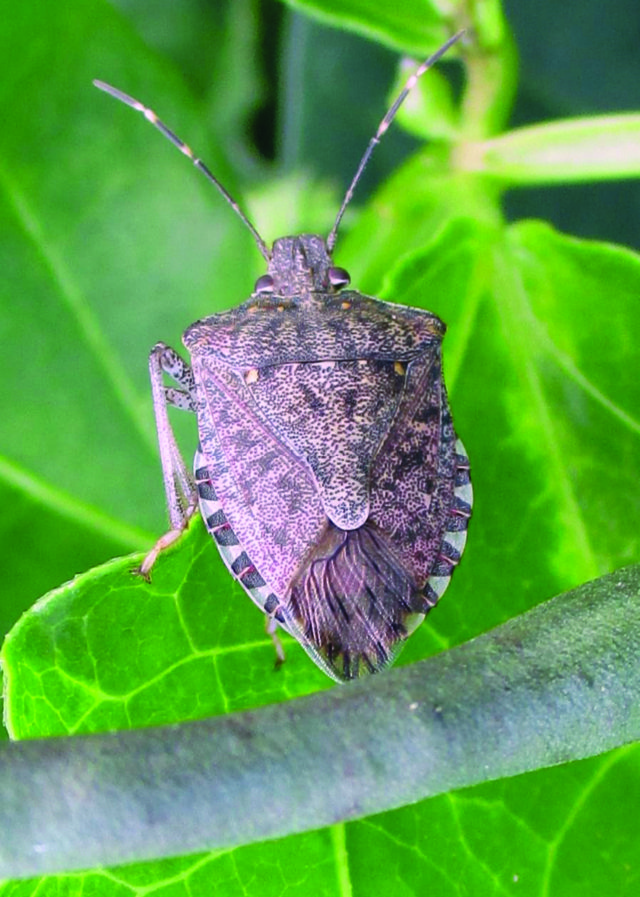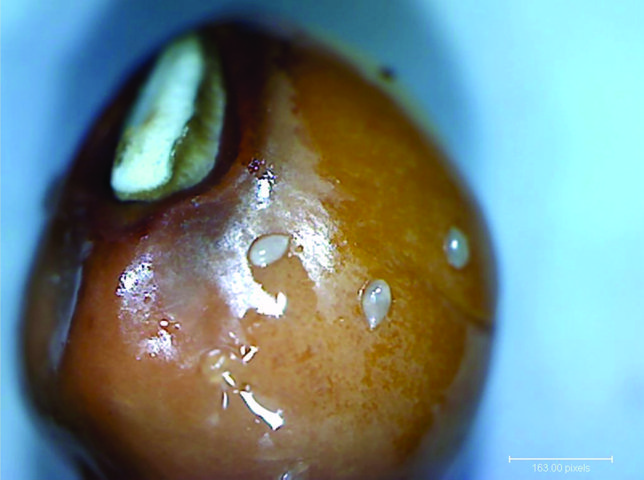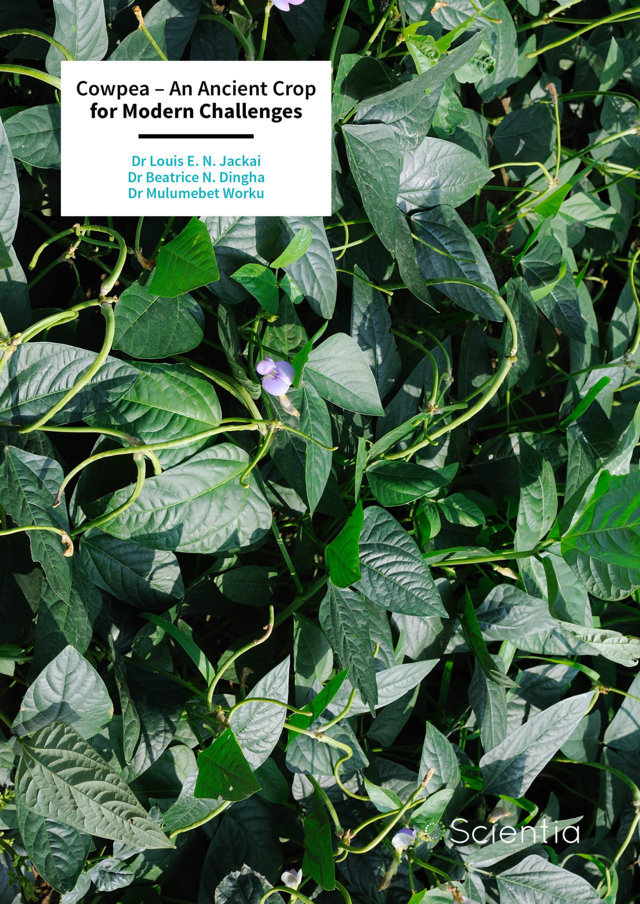Cowpea – An Ancient Crop for Modern Challenges
Cowpea has been cultivated as a crop for thousands of years, and is well-placed to improve the sustainability of modern agricultural systems. As part of a NIFA-funded project, Dr Louis Jackai, Dr Beatrice Dingha and Dr Mulumebet Worku and their students at North Carolina A&T State University are carrying out research that could open up wider avenues to the cultivation of this uniquely versatile crop.
Cowpea as a Trap Crop & Pollinator Community Enhancer
Cowpea is a widely grown legume used both as a food crop for humans and animals, and as a cover crop to improve soil quality and suppress weeds. It is thought to have been one of the first plants to be cultivated by humans, and its seeds are a good source of protein and vitamins, playing an important role in traditional African, Asian and southern US cuisine.
Despite cowpea’s long history in agriculture, scientists are still discovering surprising new uses for it. Dr Louis Jackai and Dr Beatrice Dingha are entomologists at North Carolina A&T State University. They are particularly interested in cowpea’s wide range of uses, which include its potential to reduce pesticide application in agricultural systems through its use as a trap for insect pests.
Insect pests cause considerable damage to crops, and can reduce yields by over 90%. Currently, pesticides are widely used to control pests. With increasing recognition of the negative effects that can result from pesticide use, both on human health and on the environment, there is growing appetite for alternative pest management solutions. It has long been known that increasing the number of crop species grown on an agricultural landscape can suppress pest levels. One such strategy involves growing crops together in time and space, as intercrops or companion crops, with one crop that is highly preferred as the trap crop. This strategy diverts pests from the main (protected) crop to the trap crop, thus resulting in reduced damage to the main crop.

Dr Jackai’s team has shown that the brown marmorated stink bug – an invasive species that has recently caused considerable damage to US crop yields – is particularly attracted to cowpea. This could make cowpea a suitable trap crop to grow alongside crops such as soybean. However, the interaction between crops can be complex, and may result in either an increase or a decrease in the pest load depending on the insect-plant interrelationships. Dr Dingha is currently leading the team’s research to improve our understanding of how cowpea might perform with different main crops, such as corn, peppers, soybean and others. Dr Jackai and his students have also shown that some cowpeas can also be used as an intra-specific trap crop used to protect other cowpea varieties from the brown marmorated stink bug.
Cowpea also offers another benefit when grown with different main crops, especially those that are cross-pollinated. Although cowpea flowers do not need insects for pollination, they produce large amounts of nectar, attracting and supporting pollinators such as bees and butterflies. This could increase the yield of insect-pollinated crops such as squash, melons and related crops, as well as improving ecosystem health through boosting pollinator activity. Dr Jackai and his team think cowpea might even make a welcome aesthetic splash in the growing trend of urban agriculture, with its edible fruit (fresh cowpea pods) preceded by brightly coloured flowers that appear synchronously and beautify our landscapes. ‘We have identified two varieties we think would be particularly useful for urban spaces, with their low growth habit and beautiful blooms that brighten our surroundings, yet which can also be used for human food,’ Dr Jackai says.

Damage to cowpea pods caused by the Brown Marmorated Stink Bug
Better Yields, Storability and Profits with Vegetable Oil

The Brown Marmorated Stink Bug
Cowpea’s attractiveness to insects is a double-edged sword, and has historically resulted in low yields when grown as the main crop or monocrop. The entire plant, including foliage, pods and seeds, is susceptible to attacks by a range of insect pests, including the leaffooted bug, cowpea curculio and several types of stinkbugs. Dr Jackai, Dr Dingha and their colleagues have observed that although there are some areas with low levels of pest infestations, many cowpea farmers use large amounts of insecticides to control insect damage, sometimes spraying up to three times a week in locations with multiple pests and/ or high infestations. This practice is damaging to human health and the environment, affecting the populations of beneficial insects and other animals that are important for ecosystem function, such as the pollinators mentioned earlier.
Dr Jackai and Dr Dingha’s work on integrated pest management solutions for cowpea crops in the US includes exploring other alternative methods of pest control. They have shown that carefully choosing the planting date can reduce the populations of cowpea pests, avoiding the need for insecticide use. In the case of the brown marmorated stink bug and related pests, this effect is more pronounced with early planting once environmental conditions become favourable, since pest populations tend to increase as the season progresses.
Another promising approach to reduce insect infestation in stored cowpea stands out for its simplicity and cost-effectiveness: treating stored cowpea seeds with vegetable oil. The research team has been exploring this approach – assessing how well different types and amounts of commonly available vegetable oil such as peanut, soybean, canola, truffle, and others can control populations of a particular beetle that can reduce stored cowpea to dust within a period of three months. The team found that treating cowpeas with oil can greatly reduce the beetle’s ability to deposit eggs on them, leading to a decrease of over 95% in the number of adults emerging from the seeds.
The team also observed a strong increase in adult beetle mortality. Even small doses of oil were found to be effective in certain cases, and there was little impact on the percentage of seeds that germinated. The team is now planning a range of further studies to identify the optimal procedures for oil treatments in small and medium-size farm enterprises. This research builds on, and strives to standardise, earlier work by several researchers in the field.
They hope that their findings will greatly improve the yield and profitability of cowpea, especially for small-scale farmers in their state of North Carolina, as well as in other cowpea producing states in the US and beyond.
Surprising Health Benefits
Cowpeas are rich in a range of compounds, which could affect a variety of biochemical pathways. Dr Jackai recently collaborated with Dr Mulumebet Worku, an animal scientist and molecular biologist and her former graduate student, Dr Sarah Adjei-Fremah, both also based at North Carolina A&T State University, to explore the effects of feeding cowpeas to livestock. The researchers were able to show that phenolic extract from cowpea has beneficial effects on processes associated with immunity, homeostasis and adipogenesis (transformation of fat cells) in cows. Their results were published in 2016 in the Journal of Applied Animal Research and Journal of Agricultural Science.
Drs Worku, Jackai and Adjei-Fremah also collaborated on another study investigating the effects of cowpea on livestock production and welfare. Published in 2016 in the Journal of Animal Science, their findings indicated that compared to a control diet of pearl millet, feeding cowpea forage to goats appeared to improve their resistance to internal parasites, leading to increased body weight and a lower level of parasite eggs in their faeces. Interestingly, the goats’ intestinal microbiome was also altered, and contained a reduced methanogen population. As methanogen bacteria are responsible for producing the greenhouse gas methane, feeding cowpea to animals could help to reduce the carbon footprint associated with livestock farming.
The team noticed that goats’ immune response biomarkers such as PGE2 and cytokines were modulated, meaning that cowpea’s various beneficial effects possibly act through boosting the animals’ immune responses. The team’s studies could open up previously unexploited routes to improving livestock health and optimising meat production.
However, the biochemical effects of cowpea cultivars can vary, depending on their molecular composition. Some cultivars contain certain phenolic compounds which can be bitter, toxic and interfere with digestion, making them less appropriate for consumption. Other compounds may be present that have beneficial effects, such as isoflavones. Isoflavones are naturally occurring compounds that are associated with protection against a range of human diseases.
In another study, Drs Adjei-Fremah and Worku explored this and found that cowpea extract reduced the proliferation of triplenegative breast cancer, a very severe form of the disease common among people of African descent. It is thus important to identify the specific characteristics of cowpea cultivars, with a view to using them for pharmaceutical treatments.
These studies have contributed to defining the molecular composition of cowpea cultivars. Future plans include carrying out experiments to further understand the effects different cultivar compositions have on physiology. For humans, this could open up routes to new medical treatments. For agriculture, the researchers’ work will lead to improved production and use of cowpea, and enhanced livestock farming. In turn, this greater efficiency could allow the conservation of the Earth’s limited environmental resources.
Towards Better Livelihoods
Cowpea has a number of other traits that make it especially suitable for low-income farmers in challenging environments. Thanks to its ability to convert atmospheric nitrogen to useful nitrogen compounds (nitrogen fixation), cowpea does not need nitrogen fertilisers and can thrive on lower quality soil. This also makes it a good crop to grow as a cover crop or during crop rotation, as it enhances soil fertility and organic matter, while preventing erosion and suppressing weed growth.
Cowpea can tolerate a range of conditions, including high temperatures and drought. This property is increasingly attractive in the face of climate change, which is extremely likely to bring greater unpredictability in weather patterns. With its hardiness and versatility, cowpea is an excellent crop for integrated farming systems that incorporate both crops and livestock. This could offer a route towards greater sustainability, and improve the yields and profitability of small farms.
Although world cowpea production has increased, production in the US has declined dramatically. Drs Jackai, Dingha and Worku believe that there is great potential for further expansion of cowpea cultivation, perhaps to levels more than double the current levels. The crop could be particularly productive in states such as North Carolina, which has recently seen damaging droughts that are expected to increase in frequency with climate change.

Eggs of the cowpea storage beetle are laid on seeds of shelled peas. When seeds are treated with vegetable oil many eggs may not develop into adult beetles, thus protecting cowpeas from damage from a future generations of beetles. Uniform and effective oil application protocols are being developed to ensure all seeds are covered with a thin film of oil
The state also has a large population of displaced tobacco farmers, who might find cowpea an appropriate alternative crop. Drs Dingha, Jackai and their research team are exploring ways to reduce the barriers to cowpea cultivation in North Carolina. They believe that modern technological advances and new approaches to pest management could improve yields, as could a better understanding of the great diversity in cowpea cultivars and their unique advantages. Their work focuses on assessing cowpea cultivars for their cultivation potential, based on insect resistance, their attractiveness as a trap crop to attract insect pests and support pollinators and their ecological services, ability to enrich soil nitrogen levels, and to provide ground cover. The 492-acre research farm at North Carolina A&T State University provides an ideal space for their experiments, and their preliminary findings have allowed them to identify several cultivars which appear to show promise for the next generation of cowpea crops.
Drs Jackai and Dingha also emphasise the importance of making cowpea cultivation affordable to small-scale farmers with limited incomes. Subsistence farming is an important way of life in developing regions of the world. In the US, small farms still provide valuable income to their owners – 90% of the farms in North Carolina are less than 50 acres in size. While these farmers cannot compete with larger farms in the cultivation of most crops, fresh pea cultivation favours small-scale and local production, and peas can be sold through avenues such as farmers’ markets. As such, cowpea seems to have great potential for small farms.
Overall, cowpea can improve farm productivity and profitability through its potential to boost pollination of the main crop, enrich soil fertility and act as a trap crop, while helping to reduce environmental impacts associated with intensive pesticide use. Dr Jackai and Dr Dingha are working directly with local farmers to test the economic feasibility of incorporating cowpeas into small farming systems. They believe that the multi-talented cowpea could play a role in improving livelihoods. This would contribute to addressing the priorities of the National Institute of Food and Agriculture (NIFA) of the USDA (who sponsored most of their research), through sustainably increasing global food security. Such research offers essential insights in the ongoing battles against world hunger in the face of an increasing human population and climate change.
Meet the researchers

Dr Beatrice N. Dingha
Department of Natural Resources and Environmental Design
North Carolina Agricultural and Technical State University
Greensboro, NC
USA
Dr Beatrice Dingha obtained her PhD in Entomology from Auburn University in 2005. From 2006 to 2010, she worked as Postdoctoral Research Associate at Tuskegee University, before moving to NC A&T State University in 2010 to take up the role of Research Associate in the Family and Consumer Sciences Department. In 2015, she joined the Natural Resources and Environmental Design Department as a Research Scientist conducting research on urban and agricultural pests. Her research focuses on food safety and food security with long-term goal of increasing agricultural sustainability using IPM.
CONTACT
E: bndingha@ncat.edu
T: (+1) 336 285 4864
W: http://www.ncat.edu/caes/facultystaff/profiles/dinga.html

Dr Louis E. N. Jackai
Department of Natural Resources and Environmental Design
North Carolina Agricultural and Technical State University
Greensboro,
NC USA
Dr Louis Jackai received his PhD in Entomology from the University of Illinois in 1978. He then worked as Postdoctoral Fellow at the International Institute of Tropical Agriculture in Nigeria, becoming Principal Scientist in 1980. From 2000 to 2008 he was Professor of Entomology at Tuskegee University. He joined NC A&T State University as Chair and Professor of Entomology in 2009 and in 2015 became Graduate Coordinator of the Department of Natural Resources and Environmental Design. Dr Jackai conducts entomological research involving the use of insect nutritional ecology in the development of safer and more sustainable approaches for field and postharvest insect pest management. His ongoing research strives to increase environmental safety, food security and agricultural sustainability through a focus on pest management dynamics in vegetable production systems in small rural and urban landscapes.
CONTACT
E: lejackai@ncat.edu
T: (+1) 336 285 4837
W: http://www.ncat.edu/caes/facultystaff/profiles/ljackai.html

Dr Mulumebet Worku
Department of Animal Science
North Carolina Agricultural and Technical State University
Greensboro, NC
USA
Professor Mulumebet Worku received her PhD in Animal Sciences from the University of Maryland in 1993, and started working at the National Institutes of Health as Staff Fellow, moving to the USDA Agricultural Research Service in 1996, where she took up the role of Research Biologist. In 1998, she joined the faculty in the Animal Science Department at NC A&T State University, where she worked from 2003 as assistant, associate and, since 2009, full professor. Her research has contributed to the definition of the role of genetic diversity in inflammation with current research interests focusing on studies in genomic diversity and innate immunity for the development of novel biotechnologies for global food security.
CONTACT
E: worku@ncat.edu
T: (+1) 336 285 4816
W: http://www.ncat.edu/caes/facultystaff/profiles/mworku.html
FUNDING
USDA_NIFA: Evans Allen Project #NC.X283-5-14-130-1
USDA_ARS (ARIS/AIMS-SCA): Grant #59-6046-5-001


